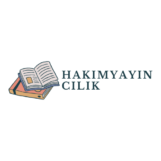Nonfiction writing can be a rewarding yet challenging endeavor. It requires clear organization and structure to effectively convey ideas and information. That’s where a graphic organizer comes into play. I’ve found that using these visual tools not only streamlines the writing process but also enhances creativity and clarity.
By breaking down complex topics into manageable sections, graphic organizers help me outline my thoughts and create a logical flow. Whether I’m drafting an article, report, or essay, these tools make it easier to visualize connections and ensure I cover all essential points. In this article, I’ll explore the benefits of using graphic organizers for nonfiction writing and share tips on how to implement them effectively.
Key Takeaways
- Importance of Graphic Organizers: nonfiction writing graphic organizer are essential tools that provide a visual framework, helping to structure information and ideas effectively in nonfiction writing.
- Types of Graphic Organizers: Different types serve various purposes, including mind maps for brainstorming, Venn diagrams for comparisons, flowcharts for processes, and K-W-L charts for activating and summarizing knowledge.
- Benefits of Utilizing Graphic Organizers: These tools enhance clarity, improve organization, and streamline the writing process, leading to a more coherent and engaging final product.
- Steps to Create an Effective Organizer: A systematic approach involves identifying the main topic, determining key points, selecting the right organizer type, arranging information logically, and adding supporting details.
- Real-Life Applications: Graphic organizers are widely used in education, business, healthcare, writing, and research to facilitate understanding and enhance communication.
- Personalization and Adaptation: To maximize effectiveness, adapt graphic organizers to meet audience needs, incorporate personal experiences, and seek feedback for continuous improvement.
Nonfiction Writing Graphic Organizer
Graphic organizers play a crucial role in nonfiction writing by providing a visual framework that structures information effectively. They help in organizing thoughts, identifying connections, and presenting ideas clearly. Utilizing various formats, such as charts, webs, or diagrams, aids in breaking down complex topics into smaller, manageable segments.
Different types of graphic organizers serve specific purposes in nonfiction writing:
- Mind Maps: These tools allow for brainstorming ideas and showing relationships between concepts. They visually represent how central themes connect to supporting details.
- Venn Diagrams: Useful for comparing and contrasting topics, Venn diagrams enable the identification of similarities and differences in a clear format.
- Flowcharts: Flowcharts illustrate processes or sequences. They provide a step-by-step layout for understanding procedures and causal relationships.
- K-W-L Charts: K-W-L (Know, Want to know, Learned) charts help students activate prior knowledge, set learning objectives, and reflect on what they’ve learned.
These graphic organizers not only streamline the writing process but also enhance comprehension, making it easier to develop a well-organized nonfiction piece. Incorporating these tools leads to improved clarity and cohesiveness in my writing, ultimately resulting in a more engaging final product.
Types of Nonfiction Writing Graphic Organizers
Various graphic organizers effectively support nonfiction writing by facilitating clear organization of ideas. The two main types of graphic organizers include data organizers and visual organizers.
Data Organizers
Data organizers systematically arrange factual information, helping to present and analyze data effectively. Examples include:
- Charts: Present numerical or categorical data clearly, allowing for direct comparison.
- Tables: Summarize information succinctly, organizing content into rows and columns for easy reference.
- Timelines: Sequence events chronologically, showing relationships and key moments in a specific topic’s history.
- K-W-L Charts: Help outline what I know, what I want to learn, and what I’ve learned about a topic, promoting engagement and reflection.
- Mind Maps: Centralize a main idea, branching out into related concepts, promoting brainstorming and creativity.
- Venn Diagrams: Show overlaps and differences between two or more concepts, aiding in comparative analysis.
- Flowcharts: Illustrate processes or sequences, making complex systems easier to understand and follow.
- Webs: Connect various ideas around a central topic, facilitating the exploration of relationships and subtopics.
Benefits of Using Graphic Organizers in Nonfiction Writing
Graphic organizers offer significant advantages in nonfiction writing, enhancing both the writing process and the end product. They provide a structured approach to organizing information, which results in clearer and more effective communication.
Enhancing Clarity and Understanding
Graphic organizers simplify complex topics, making them easier to understand. They present ideas visually, which aids retention and comprehension by allowing writers and readers to see relationships and hierarchies among concepts. For example, a mind map can highlight connections between different ideas, while a K-W-L chart helps identify what is known, what is wanted to be known, and what has been learned. This visual structure clarifies the content, reducing confusion and enhancing the reader’s overall grasp of the material.
Improving Organization and Structure
Graphic organizers improve organization by breaking down information into manageable segments. They facilitate the outlining process, ensuring that key points and supporting details are clearly defined. For instance, flowcharts depict processes sequentially, guiding the reader through each step effectively. Using these tools allows for a logical arrangement of ideas, which results in a coherent narrative flow. Whether employing timelines to chronologically organize events or Venn diagrams to compare and contrast concepts, graphic organizers streamline the writing process and foster a more cohesive structure in nonfiction projects.
How to Create an Effective Nonfiction Writing Graphic Organizer
Creating an effective nonfiction writing graphic organizer involves a systematic approach that enhances clarity and organization. Following these steps ensures that your ideas are structured logically and convey your message effectively.
Steps to Designing Your Organizer
- Identify the Main Topic: Begin with a clear understanding of your main topic. Write it at the center of your organizer to guide all subsequent details.
- Determine Key Points: List the key points related to your topic. These points should encompass the vital aspects that support your main idea.
- Select a Graphic Organizer Type: Choose a graphic organizer that suits your needs. Mind maps work well for brainstorming, while flowcharts fit process explanations.
- Arrange Information Logically: Organize your key points in a logical sequence. Use lines or arrows to connect related ideas, illustrating relationships clearly.
- Add Supporting Details: Incorporate supporting details or examples under each key point. This adds depth and clarity to the organizer.
- Review and Revise: Evaluate the overall structure for clarity and coherence. Make adjustments to ensure that all information flows smoothly.
- Use Colors Strategically: Employ different colors for various sections to enhance visual appeal and aid in information differentiation.
- Incorporate Personal Meaning: Integrate personal experiences or insights related to your topic. This makes the organizer more relatable and engaging.
- Adapt to Audience Needs: Tailor the graphic organizer based on your target audience’s preferences. Consider their familiarity with the subject matter.
- Experiment with Layouts: Don’t hesitate to explore varied layouts. Try different arrangements to find what best conveys your ideas visually.
- Keep it Simple: Avoid cluttering the organizer. Maintain simplicity to ensure clarity and facilitate easy comprehension.
- Seek Feedback: Share your graphic organizer with peers or mentors for constructive feedback. Improvements based on suggestions can enhance effectiveness.
By focusing on these steps and personalization tips, the graphic organizer can transform complex information into an accessible and engaging format for nonfiction writing.
Real-Life Applications and Examples
Graphic organizers find extensive use in nonfiction writing across various fields, enhancing clarity and aiding comprehension.
Education
In educational settings, teachers employ tools like K-W-L charts to assess students’ prior knowledge, stimulate inquiry, and measure learning progress. Mind maps assist students in brainstorming projects, allowing them to visualize connections between concepts. Flowcharts guide students through processes, such as scientific methods, making abstract ideas tangible and easy to follow.
Business
In business, professionals utilize graphic organizers for project management and strategy development. Gantt charts provide visual timelines, enabling clearer tracking of project milestones and deadlines. Venn diagrams help teams analyze market competition by illustrating similarities and differences between products.
Healthcare
Healthcare practitioners utilize flowcharts to outline patient treatment protocols. These visual aids help ensure adherence to standards of care and streamline decision-making processes for diagnoses and interventions. K-W-L charts can also help patients comprehend their health journeys by clarifying what they know, what they want to learn, and what they have achieved.
Writing and Publishing
Writers and editors use graphic organizers to plan articles, books, and reports. Storyboards assist in visualizing narrative structures while ensuring all critical points are addressed. Tables and charts present research data effectively, improving readability and engagement in nonfiction literature.
Research
Researchers often rely on Venn diagrams and K-W-L charts to categorize sources and synthesize findings. Data organizers, such as tables, facilitate the comparison of results across studies, assisting in identifying trends and patterns essential for building arguments.
By integrating graphic organizers into diverse applications, I enhance understanding, retention, and engagement in nonfiction writing while simplifying complex information for any audience.
Graphic Organizer
Embracing graphic organizers has transformed my approach to nonfiction writing. These tools not only streamline my thought process but also enhance the clarity and effectiveness of my work. By visually mapping out ideas and relationships, I can tackle complex topics with confidence.
Whether I’m using mind maps to brainstorm or flowcharts to outline processes, I’ve discovered that graphic organizers foster deeper understanding and retention. As I continue to experiment with different types and layouts, I see firsthand how they elevate my writing. I encourage you to explore these valuable resources and witness the positive impact they can have on your nonfiction projects.

